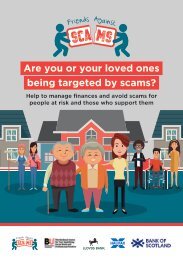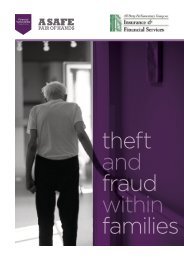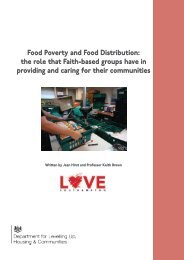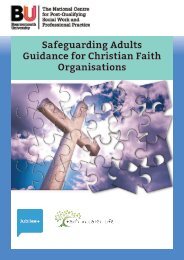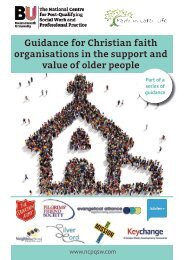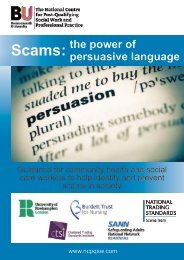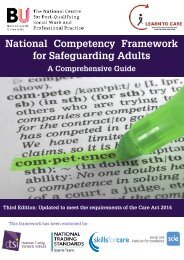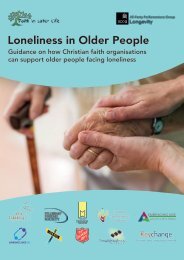0-Coercion and control report with pics FINAL
Coercion and control are used in both domestic and financial abuse. There are also differences in how agencies approach these concerns, and we seek to highlight this to learn from and utilise best practice.
Coercion and control are used in both domestic and financial abuse. There are also differences in how agencies approach these concerns, and we seek to highlight this to learn from and utilise best practice.
You also want an ePaper? Increase the reach of your titles
YUMPU automatically turns print PDFs into web optimized ePapers that Google loves.
more likely to be in residential care or to have died than their nonvictim peers (Donaldson<br />
2003; Fenge et al 2018).<br />
In 2019 Trading St<strong>and</strong>ards ran a Call Blocker Project targeting households receiving scam<br />
<strong>and</strong> nuisance phone calls <strong>and</strong>/or those who were susceptible to scams. Call blockers were<br />
applied <strong>with</strong> 99% of these calls being blocked. They found that applicants to the project had<br />
a considerably lower than average wellbeing score than the general population - this is<br />
before any intervention had taken place. After call blocker application, they found<br />
significant improvements to people’s lives: ‘average well-being scores had significantly<br />
increased bringing the sample in line <strong>with</strong> the general population… Less than 19% of<br />
vulnerable respondents <strong>and</strong> just 11% of those living alone remained on a low well-being<br />
score after three months’ (Rosenorn-Lang et al 2020:2).<br />
Their findings support the case for installing call blockers where people are receiving scam<br />
calls. Interestingly their project also highlighted how simply receiving these calls is<br />
detrimental to wellbeing - even when no money is lost.<br />
Similarly, the National Trading St<strong>and</strong>ards Doorstep Crime Project (2015) included a victim<br />
impact survey, which highlighted four significant impacts on health <strong>and</strong> well-being:<br />
On a scale of 1 to 10, <strong>with</strong> 10 being the worst affected<br />
• 50% rated the effect of the crime on them as between 6 <strong>and</strong> 10.<br />
• 23% said it had affected their health.<br />
• 38% said it had resulted in them having reduced confidence generally.<br />
• 26% said it had left them feeling down or depressed.<br />
(Fenge et al 2018:44)<br />
If we use an average cost for a place at a care home of £1,500 per week, that is 75k per<br />
year just for one person. The cost implications to the public purse of those forced to move<br />
from their own home due to financial abuse are immense. We already have an ageing<br />
population <strong>and</strong> a struggling health/social care system - ‘the profound <strong>and</strong> potentially longterm<br />
negative impact of scams on personal health <strong>and</strong> well-being makes scams a public<br />
health issue’ (Fenge et al 2018:43).<br />
17





